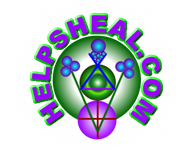Are you a 70-year-old looking to build muscle and stay strong and healthy? Well, you’re in the right place! In this article, we will explore effective strategies for tackling sarcopenia, the age-related muscle loss that many older adults experience. Don’t worry, we’ve got you covered! Whether you’re a seasoned gym-goer or just starting your fitness journey, we’ll provide you with valuable information and resources on the best muscle-building products to help you maintain and strengthen your muscles well into your golden years. Get ready to feel strong, energized, and ready to take on any challenge that comes your way!

This image is property of pixabay.com.
Consult with a healthcare professional
When starting any new exercise routine, it’s essential to consult with a healthcare professional, such as a doctor or geriatric specialist. They can assess your current health conditions and any limitations you may have. Consulting with a professional ensures that you receive personalized advice tailored to your specific situation.
Visit a doctor or geriatric specialist
Schedule a visit with a doctor or geriatric specialist who can evaluate your overall health and provide guidance on building muscle at your age. They can help determine if you have any underlying health conditions that may impact your ability to engage in certain types of exercise or activities. This step is crucial to ensure you embark on a safe and effective muscle-building journey.
Discuss current health conditions and any limitations
During your appointment, discuss your current health conditions with your healthcare professional. Be open about any limitations you may have, such as joint pain, arthritis, or previous injuries. This information will help guide your exercise routine and ensure it is tailored to your needs, minimizing the risk of exacerbating any existing conditions.
Get clearance for starting a muscle-building routine
After discussing your health conditions and limitations, your healthcare professional will provide guidance on whether or not it is safe for you to start a muscle-building routine. They will take various factors into consideration, such as your overall health and any potential risks. Getting clearance from a healthcare professional is crucial for your safety and well-being.
Design a personalized workout plan
To build muscle effectively, it’s important to design a personalized workout plan that takes into account your individual capabilities and fitness level. This tailored plan will ensure that you progress at a pace that is appropriate for your body and minimize the risk of injury.
Consider individual capabilities and fitness level
Every individual is unique, and it’s important to consider your own capabilities and fitness level when designing a workout plan. Take into account factors such as your strength, flexibility, and endurance. This will help determine the appropriate starting point for your muscle-building routine and ensure that it is challenging enough to stimulate growth, but not too overwhelming.
Incorporate strength training exercises
Strength training exercises should be a core component of your muscle-building routine. These exercises involve using resistance to challenge your muscles and promote growth. Incorporate exercises such as squats, lunges, and push-ups, which target major muscle groups. Start with lighter weights or resistance bands and gradually increase the intensity as your muscles adapt and grow stronger.
Include aerobic exercises for overall fitness
In addition to strength training, it’s essential to include aerobic exercises in your workout plan. These types of exercises, such as walking, jogging, or cycling, increase your heart rate and improve cardiovascular fitness. Aim for at least 150 minutes of moderate-intensity aerobic activity per week, or 75 minutes of vigorous-intensity aerobic activity.
Focus on balance and flexibility exercises
Balance and flexibility exercises are particularly important for older adults to maintain overall physical function and prevent falls. Incorporate exercises such as yoga or tai chi to improve balance and flexibility. These exercises not only contribute to muscle-building efforts but also enhance mobility and stability, promoting a healthier and more active lifestyle.
Start with low-impact activities
When beginning a muscle-building routine, it’s advisable to start with low-impact activities. These activities are gentle on your joints while still providing an opportunity to build strength. Some great options include walking or brisk walking, cycling or using a stationary bike, swimming or water aerobics, and yoga or tai chi. Gradually increase the intensity and duration of these activities as your body adapts and becomes stronger.

This image is property of pixabay.com.
Gradually increase intensity and duration
To continually challenge your muscles and promote growth, it’s important to follow a progressive overload principle. This involves gradually increasing the intensity and duration of your workouts over time. Start with lighter weights or resistance bands and steadily increase the load. Similarly, extend your workout sessions slowly, allowing your body to adapt and recover.
Follow a progressive overload principle
A progressive overload principle involves consistently pushing your muscles beyond their comfort zone. As your muscles adapt to the stress placed on them, they become stronger and more resilient. To implement this principle, gradually increase the weights or resistance you use during strength training exercises. This gradual progression ensures that your muscles are continually stimulated and challenged.
Increase weights or resistance gradually
When incorporating weights or resistance into your workout routine, it’s important to increase the load gradually. This allows your muscles to adapt and grow stronger without placing excessive strain on your joints. Start with lighter weights or resistance bands and gradually increase the load as your muscles become stronger. Listen to your body and only progress when you feel comfortable and confident.
Extend workout sessions slowly over time
Similarly to increasing the intensity of your exercises, it’s essential to extend the duration of your workout sessions gradually. This allows your body to adapt to the increased physical demands without risking overexertion or injury. Aim to add a few minutes to your workout sessions each week, gradually building up to longer sessions. This gradual progression ensures that your body has time to recover and adapt to the increased workload.
Focus on strength training exercises
Strength training exercises should be an integral part of your muscle-building routine. Including compound exercises, such as squats and lunges, engages multiple muscle groups simultaneously, making your workouts more efficient. Additionally, incorporate resistance training using weights or resistance bands to challenge your muscles and promote growth. Bodyweight exercises, such as push-ups or planks, are also effective for building strength and endurance.

This image is property of pixabay.com.
Include compound exercises (squats, lunges)
Compound exercises, such as squats and lunges, target multiple muscle groups simultaneously, making them highly effective for building overall strength. These exercises engage your leg muscles, as well as your core, glutes, and upper body. Incorporating compound exercises into your routine ensures that you maximize muscle stimulation and promote balanced muscle development.
Incorporate resistance training with weights or bands
Resistance training involves using external resistance, such as weights or resistance bands, to challenge your muscles. Incorporate exercises such as bicep curls, chest presses, and shoulder presses using dumbbells or resistance bands. Gradually increase the weight or resistance as your muscles adapt and become stronger. Resistance training helps build lean muscle mass and improve overall strength.
Perform exercises targeting major muscle groups
To build muscle effectively, it’s important to target major muscle groups during your workout sessions. Focus on exercises that engage muscles in your chest, back, legs, shoulders, and arms. This balanced approach ensures that all major muscle groups receive adequate stimulation for growth and development. Incorporating a variety of exercises that target different muscle groups allows for a well-rounded and efficient workout routine.
Do bodyweight exercises for strength and endurance
In addition to using weights or resistance bands, bodyweight exercises are highly effective for building strength and endurance. These exercises use your body’s weight as resistance and can be done anywhere, without the need for equipment. Incorporate exercises such as push-ups, squats, planks, and lunges to challenge your muscles and improve overall fitness. Bodyweight exercises are a convenient and accessible option for older adults looking to build muscle.
Pay attention to proper form and technique
Maintaining proper form and technique during exercises is crucial for maximizing benefits and minimizing the risk of injury. Work with a qualified trainer who can guide you on proper technique and form for each exercise. They can help ensure that you are engaging the correct muscles and avoiding unnecessary strain. Additionally, maintain correct posture throughout your workouts to further protect your muscles and joints.

Work with a qualified trainer for guidance
If you’re unsure about proper form or technique, it’s highly recommended to work with a qualified trainer. A trainer can provide personalized guidance, correct any form or posture errors, and offer modifications based on your specific needs. They can tailor your workout plan to target your goals and ensure that you are exercising safely and effectively. A qualified trainer is a valuable resource for older adults looking to build muscle.
Maintain correct posture during exercises
Proper posture is essential to prevent injuries and maximize the effectiveness of your muscle-building exercises. During strength training exercises, maintain a neutral spine position and engage your core muscles for stability. Keep your shoulders relaxed and avoid hunching or rounding your back. Pay attention to your body alignment, as it greatly affects the targeted muscle engagement and overall workout experience.
Avoid jerky movements to prevent injuries
When performing any exercise, it’s important to avoid jerky or rapid movements. Smooth and controlled movements not only reduce the risk of injury but also target the intended muscles more effectively. Focus on maintaining a steady tempo and avoid using momentum to perform exercises. By exercising with control and intention, you’ll ensure that you are working your muscles efficiently while minimizing the risk of strain or injury.
Ensure adequate rest and recovery
Rest and recovery are crucial components of any muscle-building routine. Allow your muscles time to repair and grow stronger by incorporating rest days between workout sessions. Overtraining can lead to muscle fatigue and increased risk of injury. Additionally, prioritize getting enough sleep to support muscle development. Quality sleep promotes proper recovery and allows your body to reap the benefits of your workouts.
Allow time for muscles to repair and grow
Muscle growth occurs during the recovery phase, not during workouts. Allow your muscles at least 48 hours of rest between strength training sessions to ensure optimal recovery and growth. During this time, your muscles repair the microscopic damage caused by exercise and adapt to handle more significant loads in the future. Adequate rest is essential for achieving optimal muscle-building results.

Take rest days between workout sessions
Incorporating rest days into your workout schedule is vital for your overall well-being and muscle building. Rest days allow your muscles to recover and repair, reducing the risk of overuse injuries. On your rest days, focus on light stretching or low-impact activities such as walking or yoga to promote blood flow and aid in recovery. Listen to your body and take rest days as needed to maintain a balanced and sustainable routine.
Get enough sleep to support muscle development
Sleep plays a crucial role in muscle development and overall health. Aim for 7-9 hours of quality sleep each night to support your muscle-building efforts. During sleep, your body secretes growth hormones that aid in repairing and building muscle tissue. Lack of sleep may hinder muscle recovery and impair the effectiveness of your workouts. Prioritize a good night’s sleep to optimize your muscle-building journey.
Follow a balanced and nutritious diet
A balanced and nutritious diet is essential for muscle building at any age. Fuel your body with the right nutrients to support muscle growth, repair, and overall health. Ensure you are consuming sufficient protein to provide the building blocks for muscle tissue. Incorporate lean meats, fish, dairy products, and plant-based protein sources into your diet. Additionally, eat a variety of fruits and vegetables to obtain essential vitamins and minerals necessary for optimal muscle function.
Consume sufficient protein for muscle building
Protein is a crucial nutrient for muscle building, as it provides the essential amino acids necessary for muscle repair and growth. Aim to consume around 1 to 1.2 grams of protein per kilogram of body weight each day. Incorporate lean meats, such as chicken or turkey, fish, eggs, dairy products, and plant-based protein sources like legumes and tofu. Distribute your protein intake evenly throughout the day to ensure a steady supply for muscle recovery and growth.
Include lean meats, fish, dairy, and plant protein sources
To meet your protein requirements, include a variety of protein-rich foods in your diet. Lean meats, such as chicken and turkey, are excellent sources of high-quality protein. Fatty fish, such as salmon and tuna, not only provide protein but also contain omega-3 fatty acids, which offer additional health benefits. Include dairy products like Greek yogurt and cottage cheese, as well as plant-based protein sources like legumes, tofu, and edamame.
Eat a variety of fruits and vegetables for vitamins and minerals
Fruits and vegetables are valuable sources of essential vitamins, minerals, and antioxidants that support overall health and muscle function. Aim to include a variety of colorful fruits and vegetables in your diet to obtain a wide range of nutrients. Incorporate leafy greens like spinach and kale, vibrant berries, citrus fruits, and other seasonal produce. These nutritious foods provide the vitamins and minerals necessary for optimal muscle function and overall well-being.
Stay hydrated to support muscle function
Adequate hydration is crucial for optimal muscle function and overall health. Drink plenty of water throughout the day to ensure you stay hydrated. Water helps transport nutrients to your muscles, supports joint function, and aids in the removal of waste products from your body. Listen to your body’s thirst signals, and aim to drink at least eight glasses of water daily. Additionally, consider hydrating foods and beverages, such as fruits, vegetables, and herbal teas.
Consider supplementation if necessary
While a balanced diet should provide most of the nutrients you need, some older adults may benefit from dietary supplements. However, it’s crucial to consult with a healthcare professional before taking any supplements. They can assess your specific needs and recommend the appropriate supplements, ensuring they are safe and suitable for you.
Consult with a healthcare professional before taking any supplements
Before starting any supplements, it’s essential to consult with a healthcare professional. They can evaluate your specific needs and determine if supplementation is necessary. A healthcare professional can also guide you on the appropriate dosage, potential interactions with medications you may be taking, and any precautions or warnings associated with the supplements.
Consider protein supplements if protein intake is insufficient
If your protein intake from whole foods is insufficient to meet your muscle-building needs, protein supplements may be helpful. Consult with a healthcare professional to determine if protein supplementation is necessary and to identify which type of protein supplement is best for you. Options include whey protein, casein protein, and plant-based protein powders. Ensure you choose a high-quality supplement to maximize its effectiveness.
Look for supplements supporting joint health and muscle recovery
As we age, joint health and muscle recovery become increasingly important. Consider supplements that support joint health, such as glucosamine or chondroitin, to alleviate joint pain and improve mobility. Additionally, supplements containing ingredients like collagen or tart cherry extract may aid in muscle recovery and reduce exercise-induced inflammation. Always consult with a healthcare professional before starting any new supplements.
Ensure supplements are of high quality and reputable
When considering any dietary supplements, it’s important to choose high-quality products from reputable brands. Look for supplements that have undergone third-party testing to ensure their ingredients, purity, and potency. Read reviews, consult with healthcare professionals, and seek recommendations from trusted sources to ensure that you select reputable supplements that meet your specific needs.
Stay consistent and track progress
Consistency is key when it comes to muscle building. Create a workout schedule that fits your lifestyle and stick to it. It’s important to commit to regular exercise to ensure ongoing progress. Track your strength and endurance improvements over time to stay motivated and monitor your progress. Additionally, consider tracking changes in body composition, such as muscle mass and body fat percentage, to assess the effectiveness of your muscle-building routine and make adjustments as needed.
Create a workout schedule and stick to it
To build muscle effectively, establish a workout schedule that suits your lifestyle and commitments. Find a time of day that works best for you and commit to it. Consistency is essential, so aim for a minimum of three to four workouts per week. Having a regular schedule will help make exercise a habit, increasing the likelihood of sticking to your muscle-building routine long-term.
Monitor strength and endurance improvements
Regularly monitor your strength and endurance improvements to track your progress. Keep a workout log to record the weights, repetitions, and sets for each exercise. This will allow you to see how you are progressing and set realistic goals for improvement. By continually challenging yourself and monitoring your progress, you can ensure that you are on the right track to build muscle effectively.
Track body composition changes
In addition to monitoring strength and endurance improvements, track changes in your body composition to assess the effectiveness of your muscle-building routine. Utilize methods like measuring your body fat percentage, taking circumference measurements, or using a body composition scale. These measurements provide insights into your progress and help you adjust your workout or nutrition plan if necessary.
Celebrate milestones and adjust the routine accordingly
As you achieve milestones and make progress, take the time to celebrate your achievements. Building muscle is a journey, and acknowledging your accomplishments along the way will help keep you motivated. Additionally, regularly evaluate your routine and make adjustments as needed. As your strength and endurance improve, gradually increase the intensity or introduce new exercises to continue challenging your muscles.
Building muscle at the age of 70 is absolutely possible with the right approach. By consulting with a healthcare professional, designing a personalized workout plan, starting with low-impact activities, gradually increasing intensity and duration, focusing on strength training exercises, maintaining proper form and technique, ensuring adequate rest and recovery, following a balanced and nutritious diet, considering supplementation if necessary, and staying consistent and tracking progress, you can successfully build muscle and improve your overall health and well-being. Remember to always prioritize safety and listen to your body throughout your muscle-building journey.



